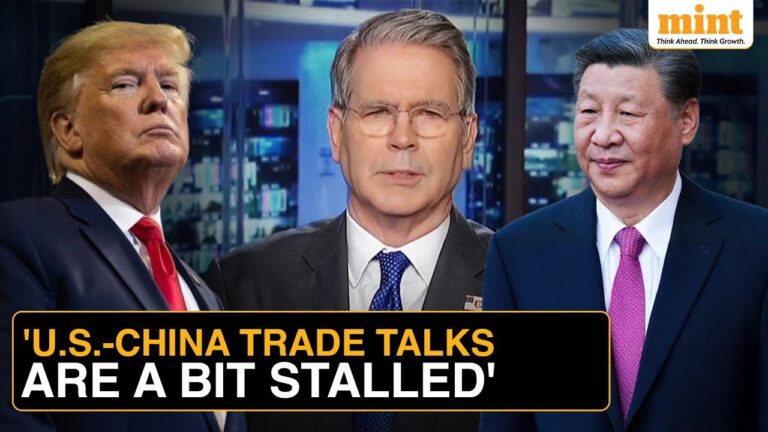The United States and China are set to hold high-stakes trade talks in London on Monday, as both economic powerhouses seek to address ongoing tensions and negotiate terms to stabilize their complex trade relationship. The discussions come amid mounting global economic uncertainties and follow months of fluctuating tariffs and diplomatic strains. Market watchers and policymakers alike will be closely monitoring the outcomes, which could have significant implications for international trade and economic growth.
US and China Prepare for High-Stakes Trade Talks in London
Representatives from the US and China are convening in London this Monday to engage in pivotal trade negotiations, aiming to resolve lingering disputes that have impacted global markets. Both sides are expected to discuss key issues including tariffs, technology transfers, and market access, amid heightened economic tensions and geopolitical complexities. Analysts suggest that the talks could set the tone for future cooperation or further discord in one of the world’s most important trade relationships.
Key topics on the agenda include:
- Reduction of tariffs on critical goods
- Enforcement mechanisms for intellectual property rights
- Agricultural exports and import quotas
- Technology sector regulations and cybersecurity concerns
| Issue | US Position | China Position |
|---|---|---|
| Tariffs | Seek phased removal | Demand fair and reciprocal cuts |
| IP Protection | Stricter enforcement | Commitment to reforms |
| Tech Transfers | End forced transfers | Maintain sovereignty over policy |
Key Issues on the Table Include Technology, Tariffs, and Market Access
Central to the upcoming trade talks are complex discussions around technology transfer restrictions, which have been a point of contention for both Washington and Beijing. The U.S. is pushing for more transparency and stricter controls to prevent forced technology sharing, while China advocates for measures that protect its growing innovation ecosystem without disrupting established business flows. Alongside technology, the existing tariffs imposed during previous trade disputes remain a significant hurdle, with both sides debating their scale and duration amid broader economic pressures.
Market access also takes center stage, as American companies seek fewer barriers in China’s vast consumer sector. This includes calls to reduce regulatory hurdles and improve intellectual property protections. The challenges are multi-faceted and intertwined, reflecting a broader strategic competition where economic leverage is often wielded as a diplomatic tool. The table below summarizes the main issues and the respective positions of each country:
| Issue | U.S. Position | China Position |
|---|---|---|
| Technology Transfers | Strict limits, prevent forced sharing | Protect innovation, avoid disruption |
| Tariffs | Reduce but maintain leverage | Lift selectively, protect industries |
| Market Access | Fewer barriers, IP enforcement | Gradual opening, regulatory control |
Experts Recommend Focused Dialogue and Incremental Agreement to Reduce Tensions
Amid rising geopolitical strains, analysts underscore the importance of a measured approach to diplomacy between the two economic superpowers. Experts stress that targeted conversations focusing on specific trade issues rather than broad strokes can pave the way for meaningful progress. This strategy not only helps build trust but also minimizes the risk of misunderstandings that could exacerbate tensions. Key topics expected to dominate the dialogue include intellectual property rights, tariff reductions, and technology transfer protocols.
Furthermore, specialists advocate for a step-by-step process aimed at achieving mutual concessions, rather than seeking immediate comprehensive agreements. This incremental method bolsters confidence on both sides and allows for adjustments based on evolving conditions. The table below summarizes the proposed phased approach recommended by trade experts:
| Phase | Focus Area | Objective |
|---|---|---|
| 1 | Tariff Adjustments | Lower barriers to stimulate trade flow |
| 2 | Intellectual Property | Strengthen enforcement mechanisms |
| 3 | Technology Transfer | Establish clear, fair rules |
| 4 | Monitoring & Compliance | Create joint verification frameworks |
Future Outlook
As both sides prepare to engage in what could be pivotal discussions, global markets and policymakers will be watching closely for signs of progress. The outcome of the London trade talks may well influence the trajectory of US-China economic relations in the months ahead, underscoring the high stakes involved in this latest round of negotiations.




